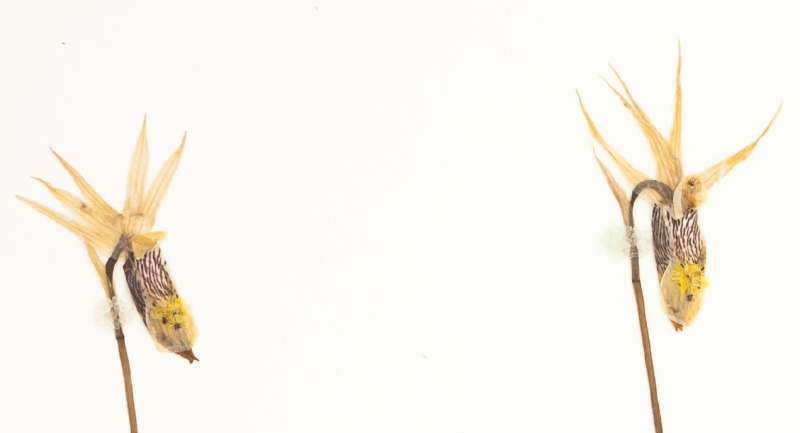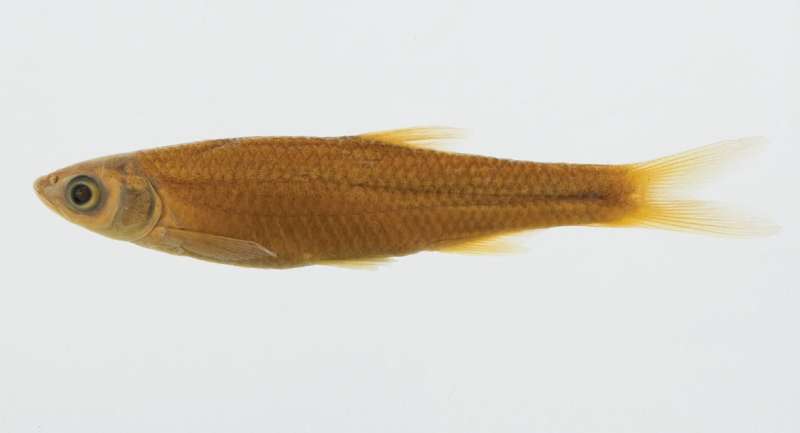Bell Museum launches the midwest's first comprehensive online 'Biodiversity Atlas'

The Bell Museum at the University of Minnesota has launched the first web portal providing access to all of its biodiversity collections. The Minnesota Biodiversity Atlas is an online digital resource offering public access to hundreds of thousands of plant and animal specimens, from algae to zebras. The Atlas—the midwest's first portal to integrate such disparate collections—houses over 5 terabytes of data from the museum's botanical and zoological collections. More than 16,000 species from Minnesota and around the world are represented such as the calypso orchid and the emerald shiner.
"Museums all over are putting their collections online, just as libraries did two decades ago," said Bell Museum scientific director and curator of plants George Weiblen. "The problem is that museums tend to compartmentalize their collections in separate databases—one for mammals, one for birds, etc. This makes it hard to see the big picture when it comes to biodiversity, especially in a unique place like Minnesota, where four biomes come together along with an incredible variety of life."
The project, funded by the Minnesota Environment and Natural Resources Trust Fund, makes available products of the Minnesota Biological Survey, other state agencies, and University researchers studying plants, wildlife, and microorganisms in Minnesota. The Atlas serves critical needs like guiding field surveys, providing images for identification in the field, and enabling conservation planning by partners including the Department of Natural Resources and the Minnesota Pollution Control Agency.
"This is one of the greatest research and conservation resources at the University of Minnesota, and now it's the most accessible," said Keith Barker, principal investigator and Bell curator of birds and genetic resources. "With a few clicks, anyone from nature enthusiasts to educators can locate records of life in Minnesota and beyond."

Museum specimens provide the best record of historical distribution of life. The Bell Museum has accumulated more than 750,000 specimens of wildlife, plants and fungi from the Mississippi and western Great Lakes region over the past 125 years. The debut of the Atlas already contains over 400,000 biodiversity records and 175,000 high resolution specimen images that span from the founding of the museum in 1872 to the present.
"The Biodiversity Atlas can help us be global citizens and good stewards of Minnesota's biodiversity," said Professor Rob Blair, UMN professor and leader of a citizen science project on Minnesota bees that will eventually share its data via the Atlas. "Sharing this information with partners in Minnesota and elsewhere holds promise for discovery and solutions to environmental challenges like climate change."
Much work remains to document, curate, and georeference specimen records. Many specimens were collected at times prior to the alteration of the land and represent the way things were before extensive European settlement. However, most of the information on these specimens is handwritten and requires transcription. This August, the Bell Museum plans to turn to crowdsourcing, launching a massive transcription effort online with the help of volunteer citizen scientists to enter and verify data through Zooniverse.org.
"The Bell Museum is a place where people of all ages can engage in activities like citizen science and take part in building a better future for our world," Weiblen said. "Plus, it's pretty fun to explore the biodiversity map. Do you know how many species are known from your hometown? I didn't until I checked the Atlas: 1,038 from Minneapolis!"
Funding for this project was provided by the Minnesota Environment and Natural Resources Trust Fund as recommended by the Legislative-Citizen Commission on Minnesota Resources (LCCMR). The Trust Fund is a permanent fund constitutionally established by the citizens of Minnesota to assist in the protection, conservation, preservation, and enhancement of the state's air, water, land, fish, wildlife and other natural resources.
Provided by University of Minnesota


















